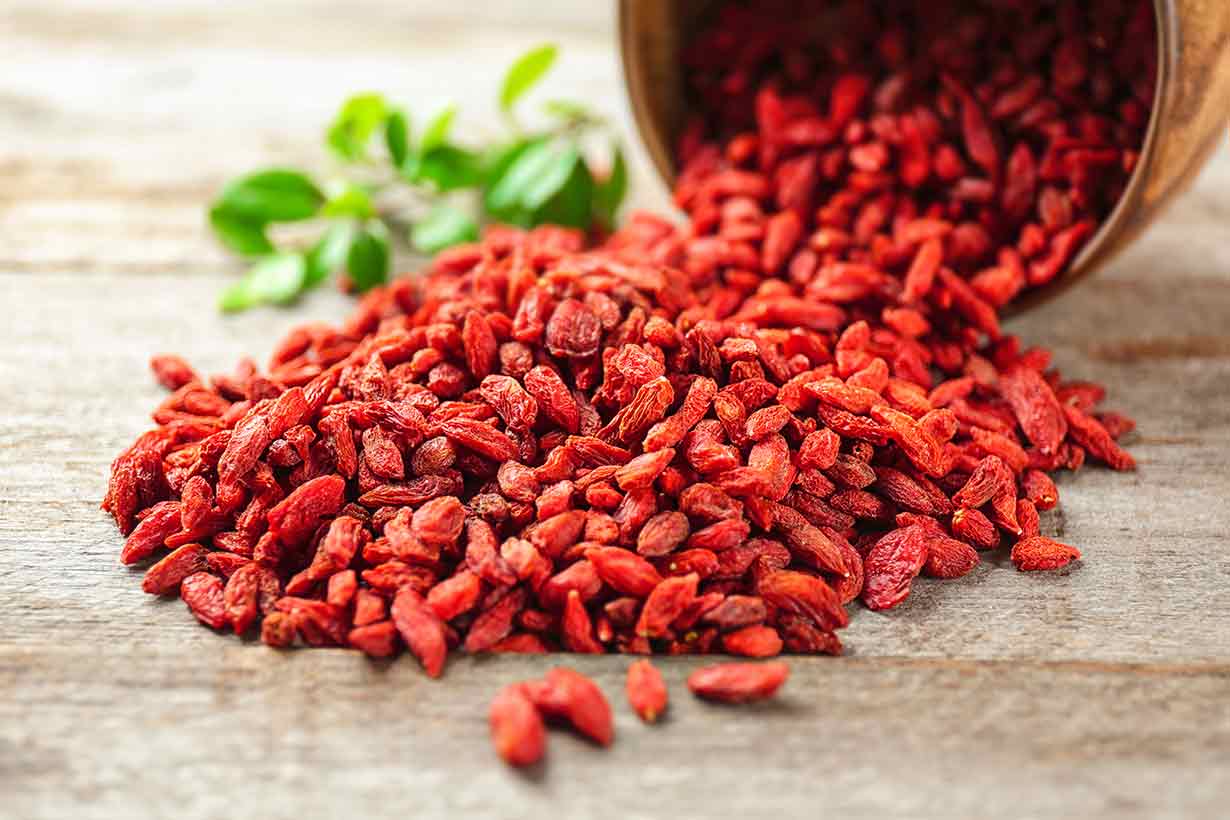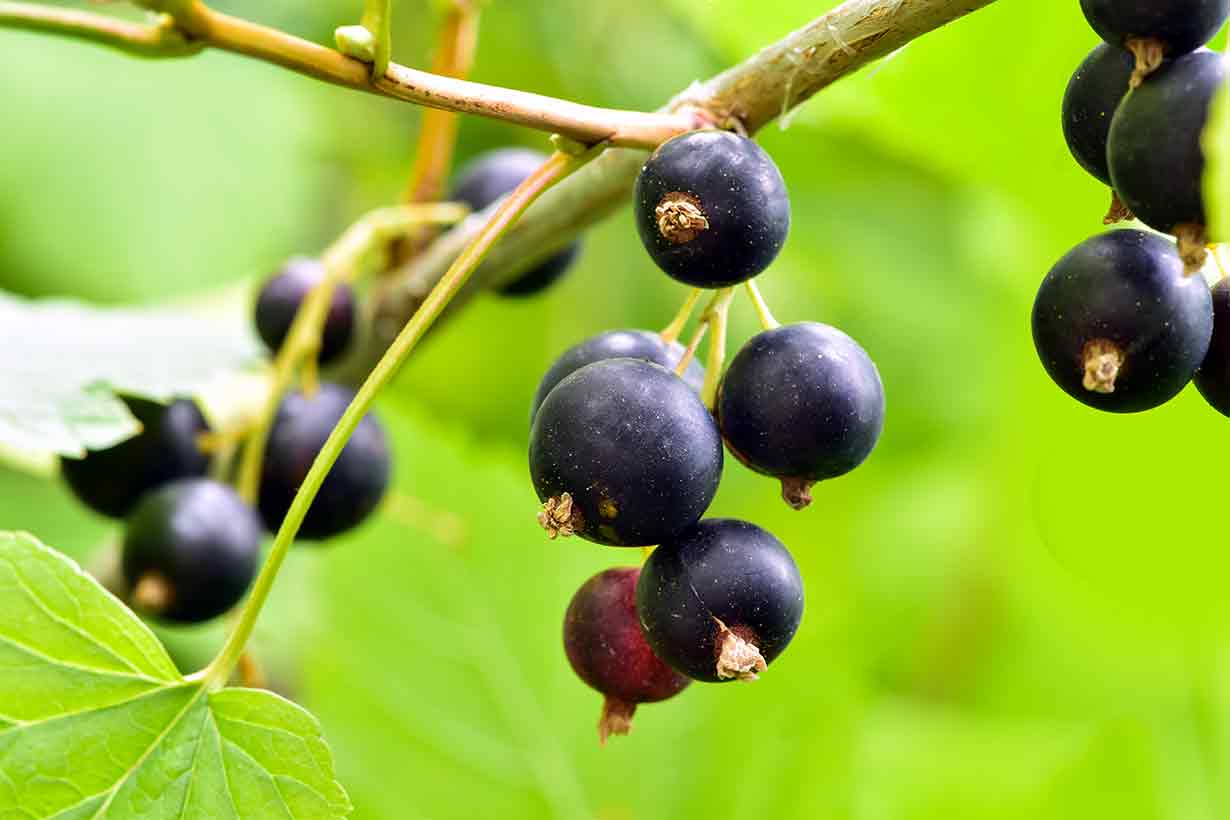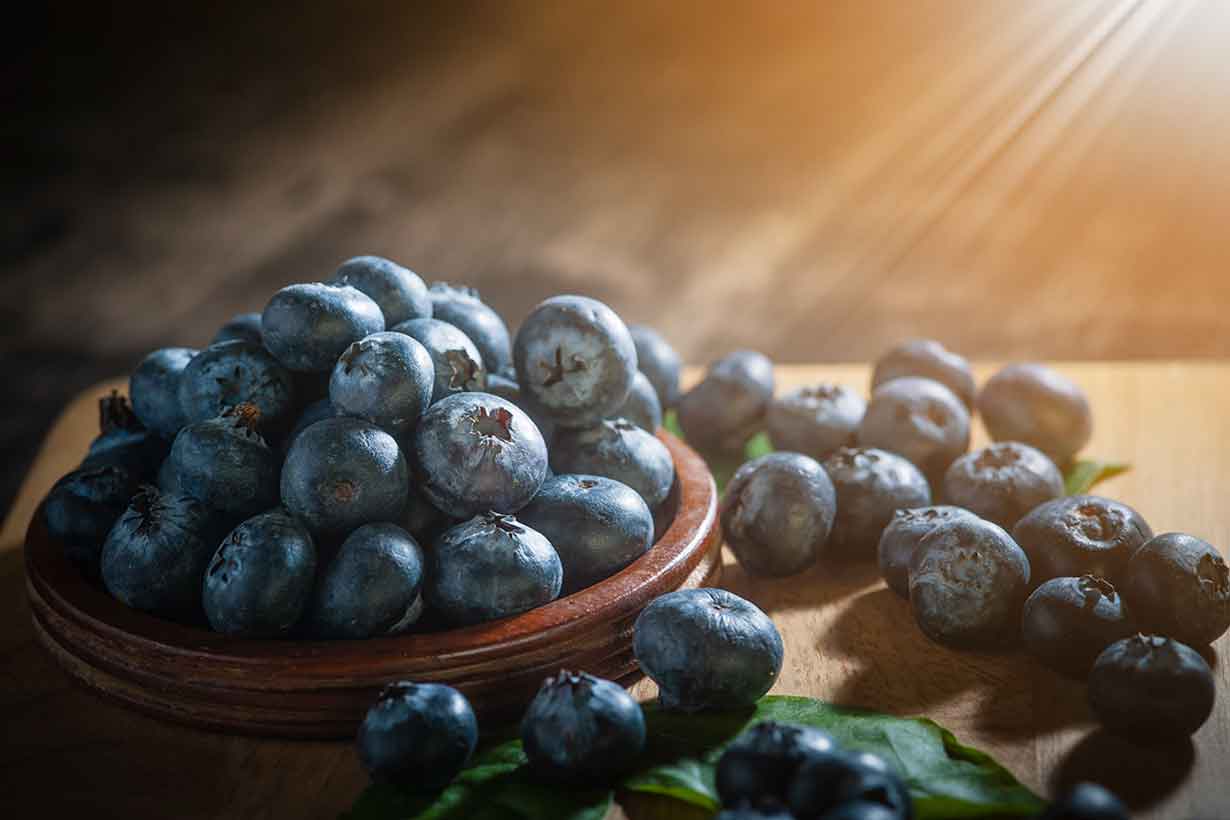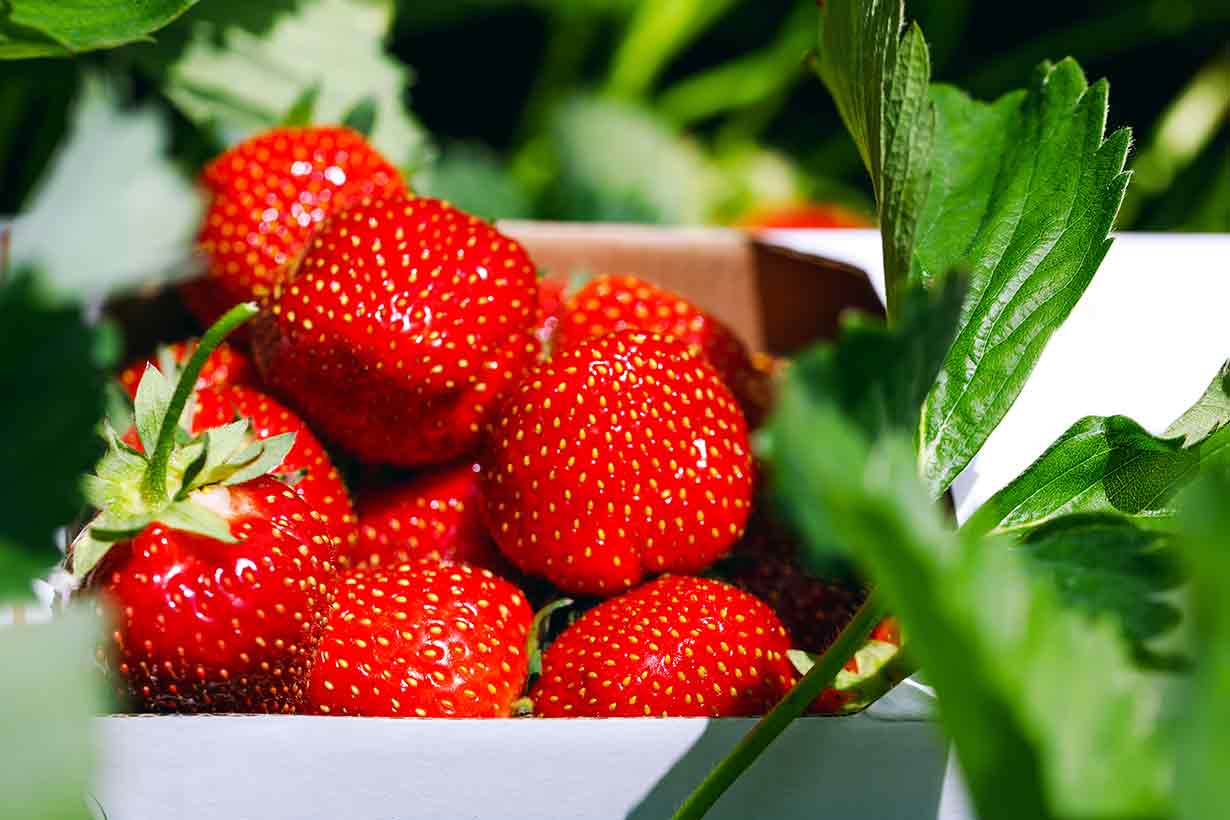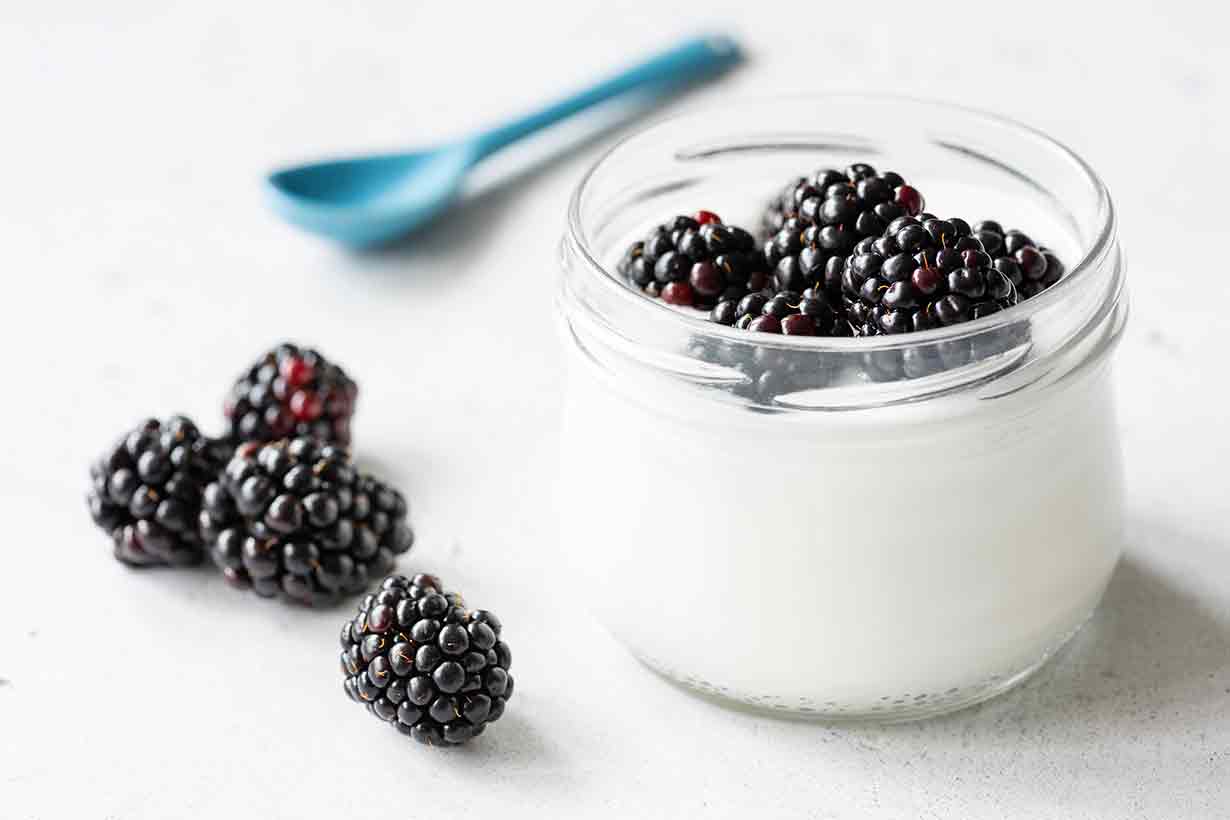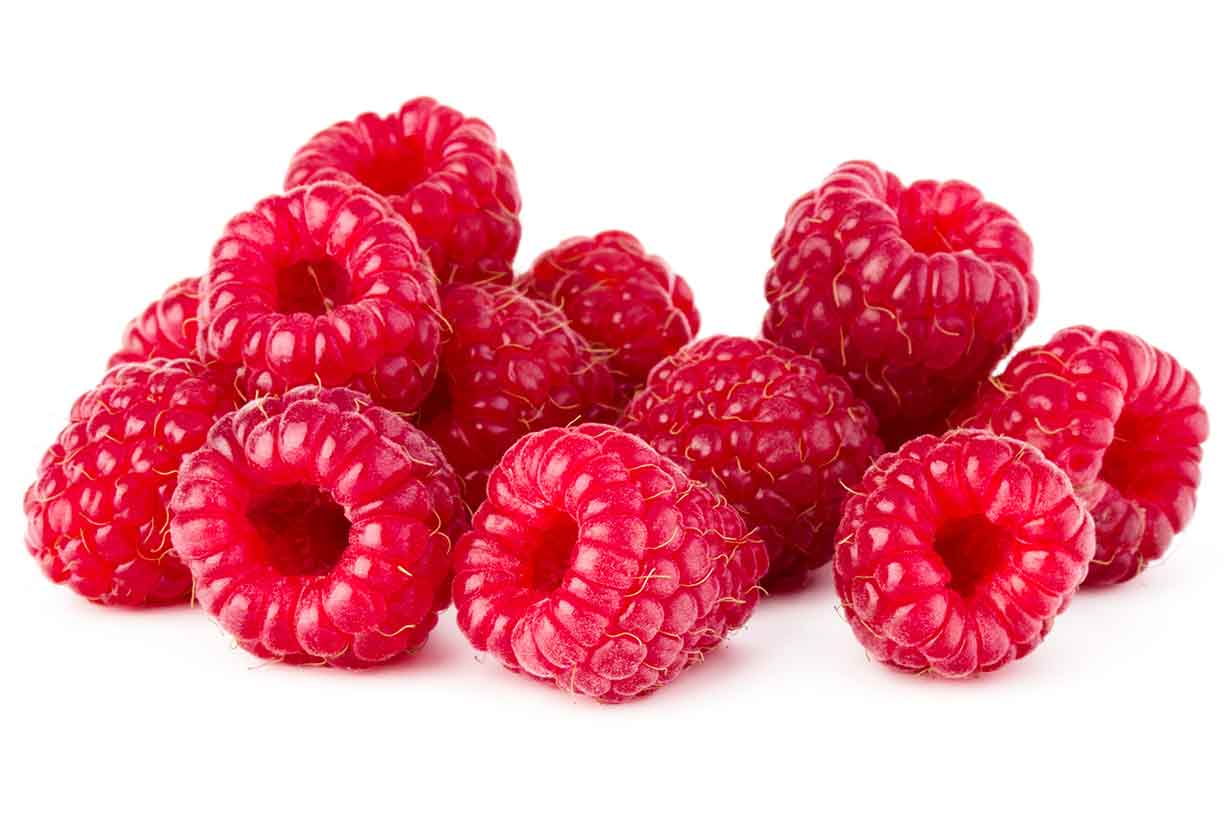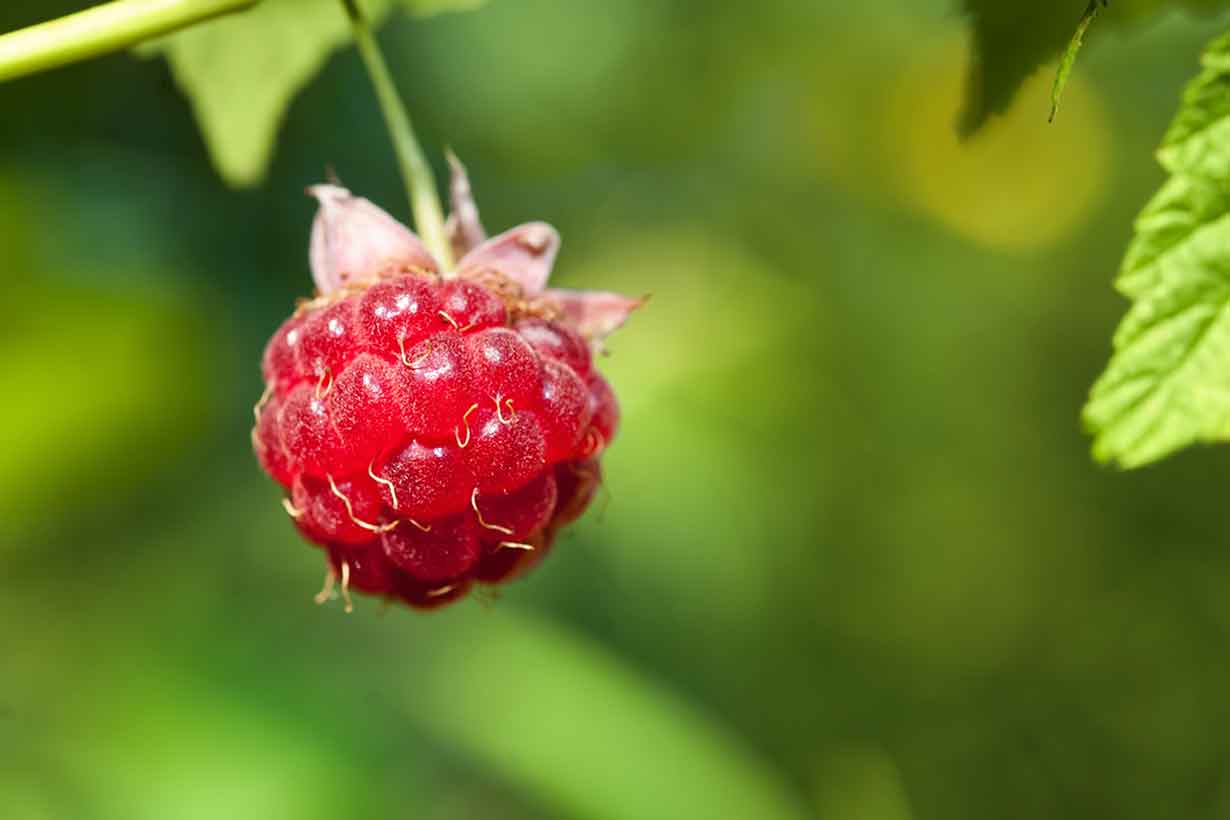Mulberries come in all different colors and varieties.
Similar to most berries, they offer a delicious taste and a good source of nutrients – particularly vitamin C.
This article examines the different varieties of mulberry fruit, their benefits, and their full nutrition profile.
What Are Mulberries?
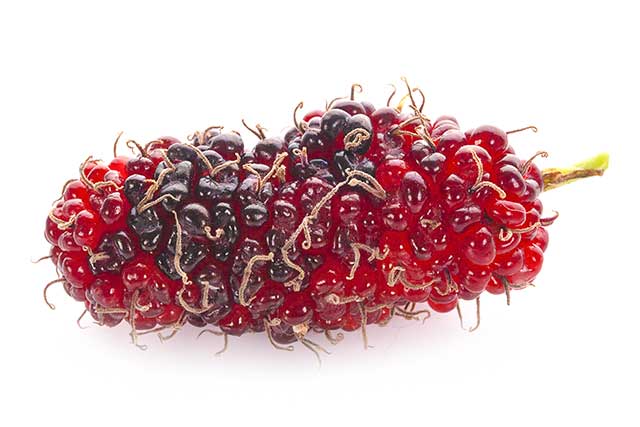
The mulberry fruit, scientifically known as Morus nigra, grows on a type of deciduous tree (Morus) belonging to the Moraceae family.
This family is otherwise known as the “mulberry family.”
While most people recognize the name “mulberry,” there are many different varieties of this fruit, and the berries are slightly different from region to region.
Mulberries grow around the world, and they have an appearance reminiscent of blackberries and raspberries.
However, mulberries tend to have a slightly longer (and larger) body, and they grow on trees rather than plants like blackberries and raspberries.
Mulberries have a sweet and slightly tart taste, and the berries are juicy and refreshing.
Types of Mulberry
There are dozens of mulberry species growing around the world, and they range in color, shape, and taste.
However, the three predominant species include black, red, and white mulberries.
Black Mulberries (Morus nigra)
Black mulberries are native to the Middle East, and they are prevalent from Turkey to India.
However, these berries now grow throughout much of Europe.
Despite the “black” in their name, these mulberries are a dark purple color, and they have a slightly sweet, tart flavor.
Red Mulberries (Morus rubra)
Red mulberries originated in North America, and they range in color from bright blood-red to a shade of burgundy.
Similar to black mulberries, this variety has a slightly tart flavor.
White Mulberries (Morus alba)
White mulberries are native to East Asia, and they are prevalent throughout Eastern China, Korea, and Japan.
Unlike black and red mulberries, the white variety has a sweeter taste without the sour notes.
Most commercial dried mulberry products are white mulberries.
Mulberry Nutrition Facts
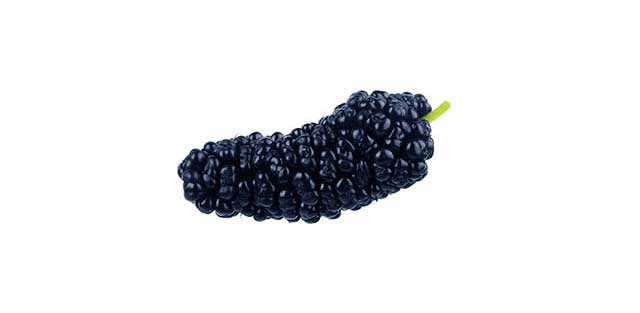
Sourced from the USDA Food Composition Databases, here are the full nutritional values for mulberries per 100 grams (1).
Calories and Macronutrients
| Calories/Macro | Amount (kcal/grams) |
|---|---|
| Calories | 43 kcal |
| Carbohydrate | 9.8 g |
| – Fiber | 1.7 g |
| – Sugars | 8.1 g |
| Fat | 0.4 g |
| – Saturated Fat | Trace |
| – Monounsaturated Fat | Trace |
| – Polyunsaturated Fat | 0.2 g |
| – Omega-3 | 1.0 mg |
| – Omega-6 | 206 mg |
| Protein | 1.4 g |
Vitamins
RDI = Reference Daily Intake.
| Vitamin | Amount | % RDI |
|---|---|---|
| Vitamin C | 36.4 mg | 61 % |
| Vitamin K1 | 7.8 mcg | 10 % |
| Vitamin B2 | 0.1 mg | 6 % |
| Vitamin E | 0.9 mg | 4 % |
| Vitamin B3 | 0.6 mg | 3 % |
| Vitamin B6 | 0.1 mg | 3 % |
| Vitamin B1 | Trace | 2 % |
| Folate | 6.0 mcg | 1 % |
| Vitamin A | 25 IU | 0% |
Minerals
| Mineral | Amount | % RDI |
|---|---|---|
| Iron | 1.9 mg | 10 % |
| Potassium | 194 mg | 6 % |
| Magnesium | 18.0 mg | 5 % |
| Calcium | 39.0 mg | 4 % |
| Phosphorus | 38.0 mcg | 4 % |
| Copper | 0.1 mg | 3 % |
| Zinc | 0.1 mg | 1 % |
| Selenium | 0.6 mcg | 1 % |
| Sodium | 10.0 mg | 0 % |
Health Benefits
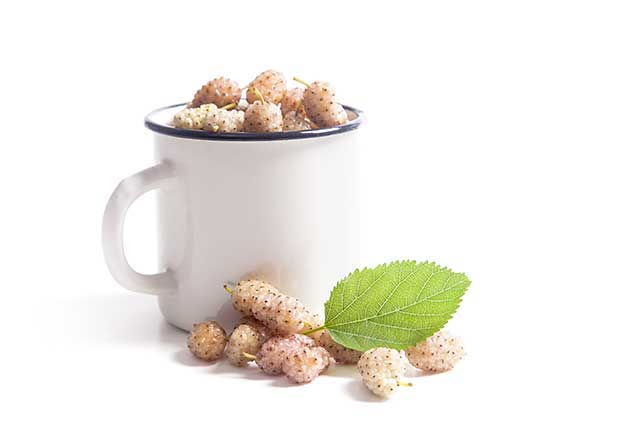
Mulberries may have several health benefits related to the nutrients and bioactive compounds they contain.
Here is a summary of their potential benefits.
1) Excellent Source of Vitamin C
Mulberries are one of the best fruit sources of vitamin C and a regular cup (140-gram) serving provides 85% of the RDI for the vitamin (1).
For comparison, this is the same amount of vitamin C that a medium-sized orange contains (2).
Vitamin C is vital for our body because it has a crucial role in the growth, repair, and maintenance of our body’s cells and functions (3).
Furthermore, the vitamin is thought to have important antioxidant properties that may protect against oxidative stress and help to lower the risk of long-term disease (4).
2) May Have a Beneficial Effect On the Lipid (Cholesterol) Profile
A recent randomized controlled trial in 58 participants with hypercholesterolemia (high cholesterol) showed that mulberries might have a beneficial effect.
In this study, 45 grams of freeze-dried mulberry fruit every day for six weeks resulted in (5);
- A significant reduction in low-density lipoprotein cholesterol (LDL) of (-6.73% compared to the control group).
- Reduced total cholesterol (-3.73% compared to control).
- No change to high-density lipoprotein cholesterol (HDL) or triglycerides.
As a result, this led to an improvement in the ratio of HDL cholesterol to non-HDL cholesterol, and this is thought to lower cardiovascular risk (6, 7).
However, it is worth noting that freeze-dried mulberries are approximately ten times more concentrated than fresh berries.
In other words; 45 grams of freeze-dried mulberries is equivalent to around one pound (454 grams) of fresh berries – a significant serving.
Unfortunately, other than this study, there is very little research on this topic using human participants at this time.
3) Low In Calories (and Carbs)
Mulberries are a good source of nutrients for anyone who is looking to limit either calories or carbohydrate intake.
Per 100 grams, mulberries contain only 9.8 grams of carbohydrate and a total of 43 calories.
While the calorie (or carbohydrate) content of food has no relevance to its health properties, it can be a way of determining the nutrient density of a specific food.
For instance, mulberries offer an excellent amount of vitamin C for very few calories.
4) Mulberries Are High In Polyphenols
Mulberry fruits are one of the best dietary sources of polyphenols.
Similar to other berries such as raspberries, the mulberry provides a wide range of bioactive compounds including (8);
- Anthocyanins: cyanidin-3-rutinoside, cyanidin-3-glucoside
- Benzoic acids: chlorogenic acid, gallic acid, vanillic acid
- Flavonols: rutin, morin, quercetin, and myricetin
Polyphenols are thought to have a wide range of potential benefits, including anti-inflammatory and anti-oxidative properties.
Studies On Mulberry Polyphenols
There are several studies on high-strength polyphenol extracts from mulberries.
These studies have shown that these concentrated polyphenols can;
- Inhibit the oxidation of LDL. Oxidized-LDL is a significant risk factor for cardiovascular disease (9).
- Improve glycemic (blood sugar) control (10).
- Protect against memory loss (11).
- Have neuroprotective effects (12).
- Have anti-inflammatory and anti-oxidative properties (13, 14).
However, this research comes from animal studies and cell (test tube) studies using high-strength extracts.
For this reason, these studies tell us very little about the potential benefits of eating actual mulberry fruit, so we should take care not to make exaggerated claims.
In other words; just because a super concentrated extract can have health benefits does not mean eating the actual fruit provides the same.
While it is possible that mulberries may have such benefits (to some extent) in high doses, there is currently no proof of this from human studies.
Are Dried Mulberries Healthy?
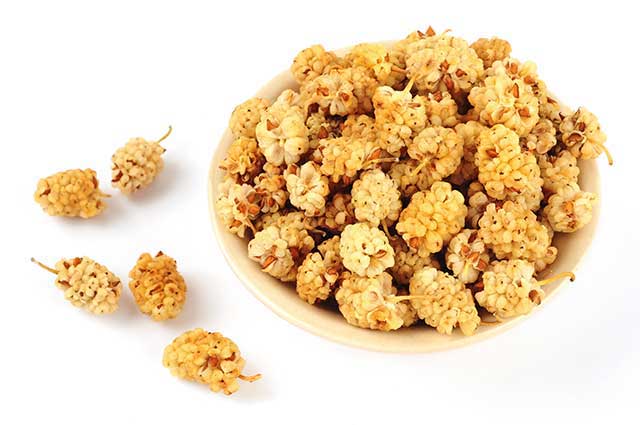
In addition to the different varieties of mulberry fruit, it is also possible to buy them in dried form.
Generally speaking, these dried berries are primarily white mulberries from China.
Compared to fresh berries, they are much lighter in weight due to the loss of moisture (water weight) during the drying process.
As a result, dried mulberries contain a much higher concentration of nutrients per gram.
There is also a difference in flavor, and dried mulberries taste very sweet with an almost caramel-like flavor
Benefits
Dried mulberries offer the following benefits;
- A more considerable amount of nutrients per gram.
- Dried berries are a convenient and portable snack.
- Longer shelf life than fresh berries.
Drawbacks
On the other hand, there are also some drawbacks;
- Dried mulberries have a much higher concentration of calories and sugar than their fresh counterparts.
- You have to pay for the privilege of someone drying the berries – they are much more expensive than the fresh variety.
Nutrient Comparison
The following table shows how fresh and dried mulberries compare regarding their macronutrient profile and vitamin C content per 100 grams (1, 15).
| Nutrient | Fresh Mulberries | Dried Mulberries |
|---|---|---|
| Calories | 43 kcal | 317.5 kcal |
| Carbohydrate | 9.8 g | 77.6 g |
| Fat | 0.4 g | 1.8 g |
| Protein | 1.4 g | 10.6 g |
| Vitamin C | 36.4 mg (61% RDI) | 275 mg (459% RDI) |
As shown in the table, dried mulberries do offer a lot more vitamin C, but this comes at the cost of a much higher calorie and carbohydrate content.
Since they offer a good range of nutrients, it is probably better to think of dried mulberries as a healthier alternative to candy.
How To Eat Mulberries
There are so many different ways to eat mulberries, and you can consume them practically any way you wish.
However, here are some ideas for those who like trying different things.
1) Mulberries and Cream
Strawberries and cream taste delicious, and it is the same for blackberries and raspberries.
Mulberries are no different, and berries and cream is a combination that works.
For an extra tasty dessert, try adding some heavy cream and half a teaspoon of pure vanilla extract to the berries.
2) Make a Smoothie
Use the following ingredients;
- 1 cup (140 grams) mulberries
- 1 cup plain whole yogurt
- 1 cup of ice cubes
Blend these three ingredients for a thick and refreshing smoothie.
Additionally, since all the fiber of the berries will still be present, this is a much healthier alternative to typical store-bought juice drinks.
The fat and protein content of the whole yogurt should also slow digestion and lower the blood-glucose response.
3) In a Berry Salad
Adding a few berries to a salad is a great way to add a bit of variety to the taste.
As an example, here are a few ingredients that work well together;
- Leafy greens (of choice)
- Fresh mozzarella cheese
- Cherry tomatoes
- Walnuts
- Extra virgin olive oil
- Balsamic vinegar
4) Plain Berries
Mulberries taste delicious just by themselves.
5) Coated In Dark Chocolate
Dark chocolate-coated mulberries is a reasonably healthy snack compared to typical chocolate/candy options.
This combination is straightforward to make too;
- Melt your favorite bar of dark chocolate in a saucepan, and then take it off the heat and add a cup of mulberries.
- Stir the mulberries well until the chocolate sauce thoroughly coats them.
- Transfer to a tray or large plate, and place in the refrigerator for 2-3 hours until the chocolate coating hardens.
Final Thoughts
Mulberries are a sweet and sour fruit with a delicious taste and a fairly good nutrition profile.
While they are not among the most nutrient-dense of foods, they do offer an excellent source of vitamin C.
Additionally, the polyphenol content of mulberries may confer some added benefits, although more research is necessary to prove this.
All in all, mulberries are a tasty choice of fruit that can play a beneficial part of a healthy diet.
For more guides to fruit, see this article on the benefits of boysenberries.


